Ancient and modern, Kazakhstan will smash your preconceptions in spectacular style – Scotland on Sunday Travel
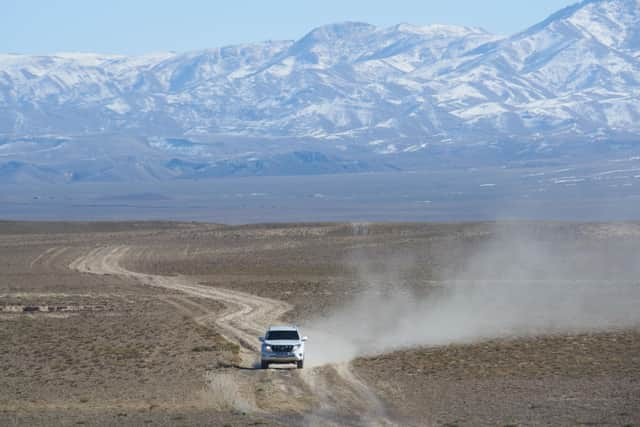

The wind blasted across the desert landscape creating dust devils full of swirling ancient particles that were lifted straight off the nearby archaeological site of Otrar Hill Fort. Turkestan, known as ‘The Jewel of Kazakhstan,’ is the ancient and historic centre and where we had come to see the country’s greatest archaeological site.
Kazakhstan had quite literally blown us away with its powerful, spectacular landscapes and culture. The country sits in the middle of what’s known historically as the Silk Road, a network of ancient trade routes formerly established during the Han Dynasty of China.
Advertisement
Hide AdAdvertisement
Hide AdPeople have preconceptions… perhaps of weather-beaten men on horseback holding a golden eagle, people dressed in traditional clothing, the desert of the Asian Steppe, and world-famous mosques and mausoleums. It has all of that, but this young, sophisticated, modern country is on par with any in the West, with its trendy bars, chic nightclubs, international style restaurants and high-end shopping. It seems Kazakhstan’s transformation has come on leaps and bounds in the past few years and it’s a country that wants to be taken seriously.
Kazakhstan has three cultural world heritage sites; the Mausoleum of Khoja Ahmed Yasawi, Petroglyphs within the Archaeological Landscape of Tamgaly and, perhaps most notably, the Silk Roads: Routes Network of Chang’an-Tianshan Corridor.
Dominating the heart of the city of Turkistan is the astoundingly beautiful, blue-tiled pilgrimage site, Mausoleum of Khoja Ahmed Yasawi, a 12th-century Sufi teacher and mystical poet where the vast, detailed tiling is breath-taking. Within the grounds is the Hilvet semi-underground mosque where it is said Khoja Ahmed Yasawi withdrew towards the end of his life.
An hour’s drive away, through desert landscape where feral camels roam, I visited the Mausoleum of Arystan Bab, an ancient spiritual burial ground, followed by a short drive to Otrar Hill Fort, where the archaeological remains of this large, medieval hill fort feature a citadel, shahristan (a town itself), rabat (suburbs) and fields, surrounded by high sand-coloured walls and semi-desert.
We finished our day watching the famous Kyz Zhibek and Tolege boat show and dining at the lively Eposia restaurant in Karavansaray complex on traditional dishes including khachapuri (flatbread with cheese), baursak (small pieces of dough fried in oil), shalapor mare’s milk (a sour or fermented horse milk drink) and Georgian wine.
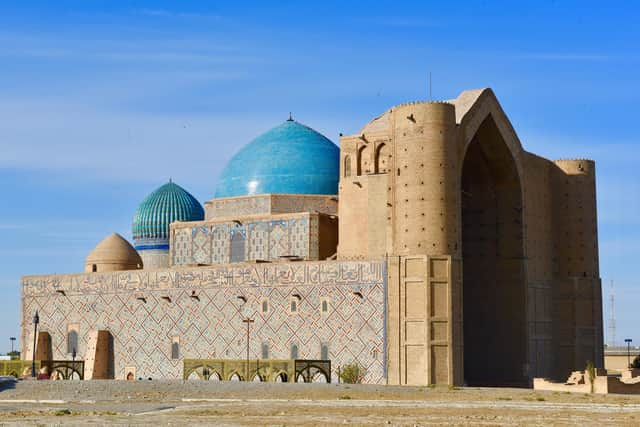

Kazakhstan is more developed than I anticipated and feels safe and welcoming. A population of just 18 million concentrated in cities creates great areas of remote, unpopulated wilderness visited by few. On 16 December 2021, Kazakhstan celebrated 30 years of independence from the Soviet Union during which the world’s ninth-largest country has asserted itself as an economic powerhouse, aiming to join the ranks of the world’s most-developed countries by 2050. Its capital city is Nur-Sultan, the official languages are Kazakh and Russian, the main religion Islam, and you’ll be able to do a lot with the local currency, the Kazakhstani tenge (KZT). Russia lies to the north, China to the east and Turkmenistan, Uzbekistan, and Kyrgyzstan to the south.
An hour’s flight from Turkistan is the city of Almaty. It was October and too soon to ski (November to May), but the backdrop of the Tian Shan Mountains were already snow covered. Perhaps not the first thought for a winter holiday, but the Tian Shan (aka Heavenly Mountain) mountain ranges that extend across Central Asia and reach the southeast corner of Kazakhstan offer spectacular opportunities.
From the luxury of the Rixos Hotel in bustling Almaty, the wilderness of the Maloalmatinsky Gorge and Kazakhstan’s largest ski destination, the Shymbulak Mountain Resort, 3200 metres above sea level and with breath-taking scenery, is a 15-minute drive by car, bus or taxi.
Advertisement
Hide AdAdvertisement
Hide AdIn Shymbulak I ran into Mark Ouellette, a tourist from Pennsylvania (USA) on his first visit to Kazakhstan, who told me: “I love discovering hidden gems and Kazakhstan has been exactly that. There’s so much to see and do here, especially in the cities. The natural surroundings are breath taking and the food too. I’d recommend this place to anyone, especially for the diverse landscapes. The locals are friendly and hospitable, and I’ve had no difficulties in getting around because lots of people speak English and it’s easy to navigate using taxis.”
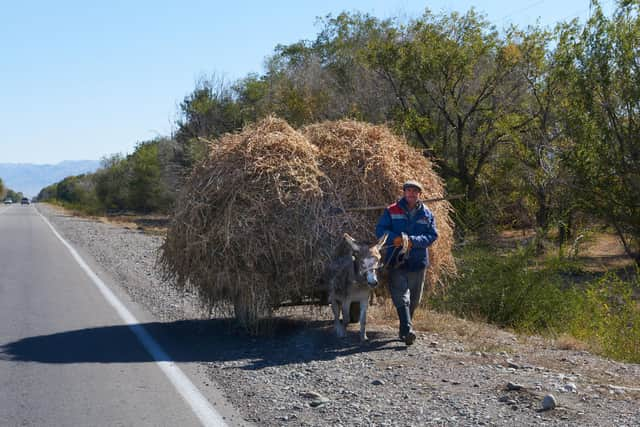

There are many benefits of skiing here: a long season, great pistes, backcountry and heli-skiing, reasonably priced international flights, proximity to a big city, fabulous restaurants, and a different culture to explore. Plus, you can visit the stunning steppes, Charyn Canyon, and Big Almaty Lake in the IIe-Alatau National Park. Also the mountains are home to the elusive snow leopard which is rarely spotted, but during lockdown a family was seen on a popular hiking path near Almaty.
The following day we drove from the bustle of Almaty to visit rural communities, following the routes used by ancient silk traders, across the desert of the Asian Steppe and the snow-capped mountains of the Heavenly Mountain range. Driving here is straight forward as petrol is cheap, there’s little traffic and the only obstacles are camel herds, flocks of sheep or feral horse crossing the roads. Outside Almaty good quality motorway soon gives way to mountain roads and dirt tracks and four hours from the city, I was driving through a remote landscape with very little habitation and many confusing tracks through the wilderness.
The multi-coloured Dunes of Kazakhstan create a stunning landscape that is many thousands of years old. The great Dune of Kazakhstan, standing 500ft above the desert, makes a deep booming sound as you walk on it, an eerie experience if you are alone in a landscape where there is no evidence of human occupation in the 1,000 square miles you can see from the top.
The following day we drove to Charyn Canyon, the baby brother of the Grand Canyon, 50km from the Chinese border. Occasionally, we’d slam on the brakes to view massive birds of prey waiting on the roadside to clean-up roadkill. Charyn Canyon has been cut into the Asian Steppe over thousands of years by the Sharyn River, a sudden chasm in the otherwise flatlands of the Kazakhstan plains where wild horses and cattle roam, sustained by the water and vegetation provided by the river.
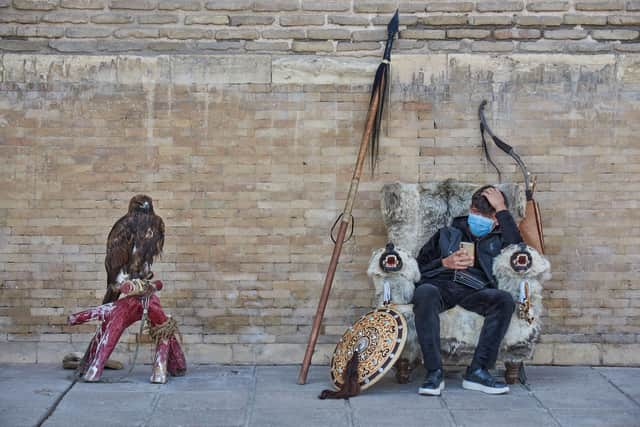

A three-hour drive from the canyon and we were back in Almaty, dining in a restaurant high above the city at Kok-Tobe-Hill via cable car with a panoramic sunset views of the city and the surrounding Heavenly Mountain range. The food is very good in Kazakhstan and dishes include hearty mountain food and lots of salads, meat dishes… and sometimes horse meat, a local delicacy, in various guises.
Come with an open mind and ready to be amazed by this hidden gem of a country. If you’re lucky, you may even spot a snow leopard!
Getting to Kazakhstan and Almaty
Direct flights on Air Astana (a Kazakh airline) from London Heathrow to the capitol Nur Sultan operate Saturdays and Wednesdays, with connecting flights to Almaty and other airports. Flight time six hours 49 minutes (3,479 miles). Air Astana is a modern airline with great links around Kazakhstan: airastana.com/global/en-us
Rixos Hotel Almaty: rixos.com/en/hotel-resort/rixos-almaty
Shymbulak Mountain Resort: shymbulak.com
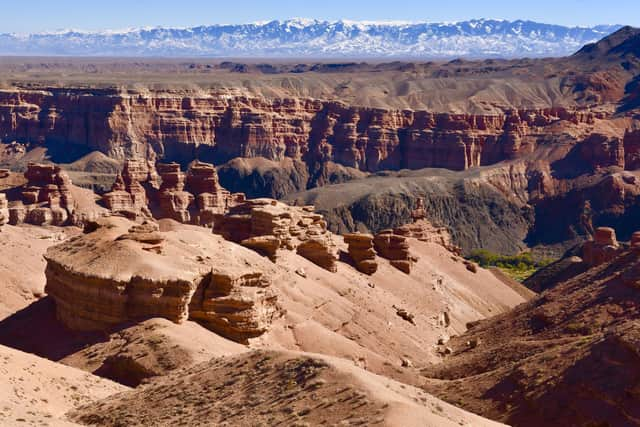

Restaurants
Advertisement
Hide AdAdvertisement
Hide AdTurkistan: Edam (local restaurant); Zoloto (national cuisine).
Almaty: Qaimaq (national cuisine); Navat (eastern cuisine); Nino (restaurant and nightclub); Chalet (Shymbulak Ski Resort); Alasha (Central Asian cuisine).
